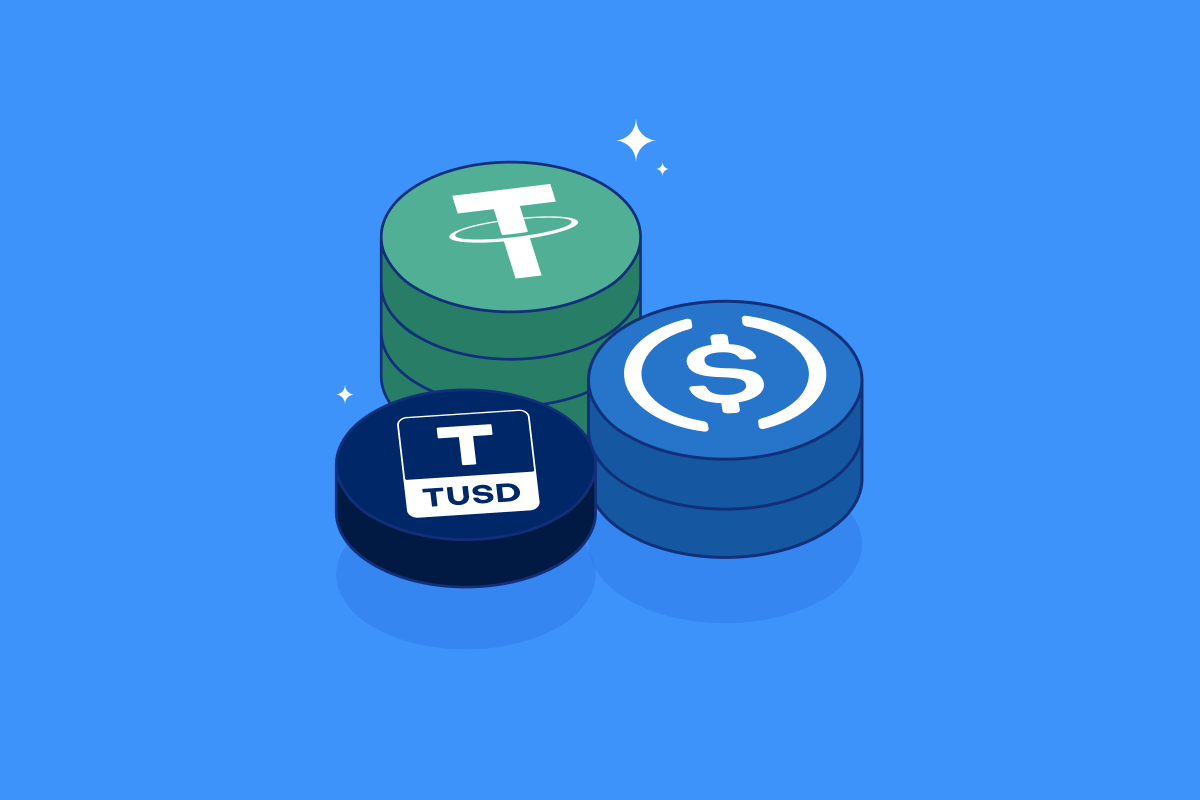In the ever-evolving world of cryptocurrencies, stablecoins have emerged as a beacon of stability amidst the volatile seas of digital assets. But what exactly are stablecoins, and how can you create one on the Ethereum blockchain? Let's dive in and explore the fascinating world of stablecoins and synthetic assets.

What is a Stablecoin?
Imagine you have a digital currency that doesn't fluctuate wildly in value like Bitcoin or Ethereum. That's a stablecoin—a type of cryptocurrency designed to maintain a stable value, usually pegged to a real-world asset like the US Dollar, gold, or other currencies. Stablecoins offer the best of both worlds: the decentralization and security of cryptocurrencies, combined with the stability of traditional fiat currencies. This makes them ideal for everyday transactions, savings, and as a hedge against market volatility.
What is a Synthetic Asset?
Now, let's talk about synthetic assets. Think of them as digital twins of real-world assets, created through smart contracts on a blockchain. These assets mimic the price behavior of their real-world counterparts but exist entirely in the digital realm. Synthetic assets allow for the tokenization of a wide range of assets, from stocks and commodities to real estate, making them tradable on decentralized exchanges. It's like having a digital representation of your favorite stock or a piece of property, all on the blockchain.
Two Ways to Create a Stablecoin
Creating a stablecoin on Ethereum can be approached in two primary ways: using synthetic assets with on-chain collateral or backed assets with off-chain collateral. Let's explore both methods.
Synthetic Asset with On-Chain Collateral
Synthetic assets are backed by on-chain collateral, ensuring transparency and decentralization. Stablecoins like DAI and Liquidity use this approach.

Example:
USDC: A stablecoin backed by on-chain collateral.
Process: Imagine you have a book worth $1 in the real world. You sell the book and use the $1 to purchase 1 USDC, which is an on-chain asset. This USDC can then be used as collateral to create a synthetic asset representing the book. The on-chain price of the book is now 1 USDC.
Steps to Create:
Acquire On-Chain Collateral: Purchase a stablecoin like USDC using real-world funds.
Smart Contract Deployment: Deploy a smart contract that accepts the on-chain collateral (USDC) and mints the synthetic asset.
Minting the Synthetic Asset: The smart contract mints the synthetic asset, which represents the real-world asset (e.g., the book).
Price Feeds: Use Chainlink oracles to provide real-time price feeds, ensuring the synthetic asset's value remains pegged to the real-world asset.
Backed Asset with Off-Chain Collateral
Backed assets rely on off-chain collateral, typically held in a centralized entity's account. The price of the real-world asset is communicated to the blockchain via oracles like Chainlink.
Example:
- Tokenizing Property: Suppose you want to tokenize a property. A centralized entity provides the price of the property, which is then used to create a tokenized representation of the property. Chainlink oracles ensure this process is decentralized.
Steps to Create:
Acquire Off-Chain Collateral: Deposit real-world assets (e.g., US Dollars) into a centralized entity's account.
Smart Contract Deployment: Deploy a smart contract that interacts with Chainlink oracles to fetch the real-world asset's price.
Minting the Backed Asset: The smart contract mints the backed asset, which represents the real-world asset (e.g., the property).
Price Feeds: Use Chainlink oracles to provide real-time price feeds, ensuring the backed asset's value remains pegged to the real-world asset.
How to Create a Stablecoin
Creating a stablecoin is a multi-step process that requires careful planning and execution. Here's a detailed guide to help you get started:
Choose the Collateral Type:
On-Chain Collateral: Use stablecoins like USDC or other cryptocurrencies.
Off-Chain Collateral: Use real-world assets like US Dollars or property.
Deploy Smart Contracts:
Write and deploy smart contracts on the Ethereum blockchain. These contracts will handle the minting, burning, and redemption of the stablecoin.
Ensure the smart contracts are audited for security and functionality. This step is crucial to prevent any vulnerabilities that could be exploited.
Integrate Chainlink Oracles:
Use Chainlink oracles to provide real-time price feeds for the collateral assets. This ensures the stablecoin's value remains pegged to the underlying asset.
Chainlink's decentralized oracle network (DON) provides reliable and tamper-proof data feeds, adding an extra layer of trust and security.
Minting and Burning Mechanisms:
Implement minting mechanisms to create new stablecoins when collateral is deposited.
Implement burning mechanisms to destroy stablecoins when collateral is withdrawn.
Depending on the stability mechanism chosen, ensure these mechanisms are governed by either an algorithmic process or a centralized entity.
Legal and Regulatory Compliance:
Ensure compliance with financial regulations, especially if using off-chain collateral.
Consult legal experts to navigate the regulatory landscape and obtain necessary licenses and approvals. This step is essential to avoid any legal hurdles later on.
Testing and Deployment:
Thoroughly test the stablecoin system on a testnet before deploying it on the Ethereum mainnet.
Monitor the system for any issues and make necessary adjustments to ensure stability and security. Continuous monitoring and updates are key to maintaining the integrity of the stablecoin.
Conclusion
Creating stablecoins on Ethereum is an exciting journey that involves choosing between synthetic assets with on-chain collateral and backed assets with off-chain collateral. Each approach has its unique advantages and challenges, particularly in terms of legal compliance and price anchoring. Chainlink oracles play a crucial role in ensuring the stability and transparency of these assets. By understanding the methodologies and challenges involved, developers and investors can make informed decisions about creating and investing in stablecoins, contributing to the growth and stability of the cryptocurrency ecosystem.
So, are you ready to dive into the world of stablecoins and make your mark on the Ethereum blockchain? The future of decentralized finance is waiting for innovators like you!
21:05
HS
